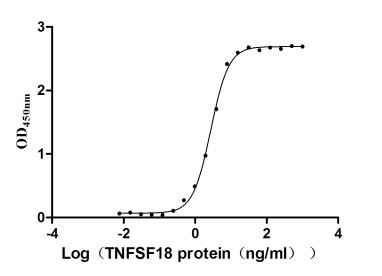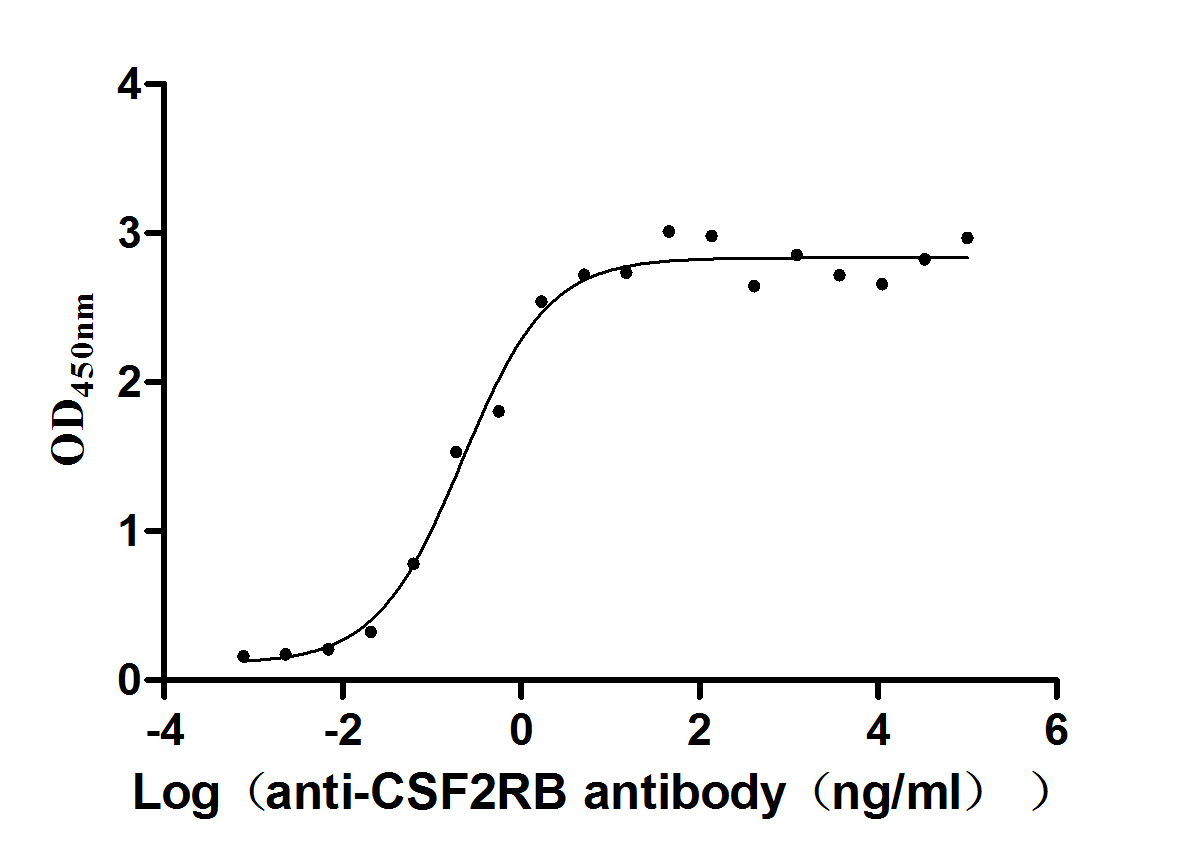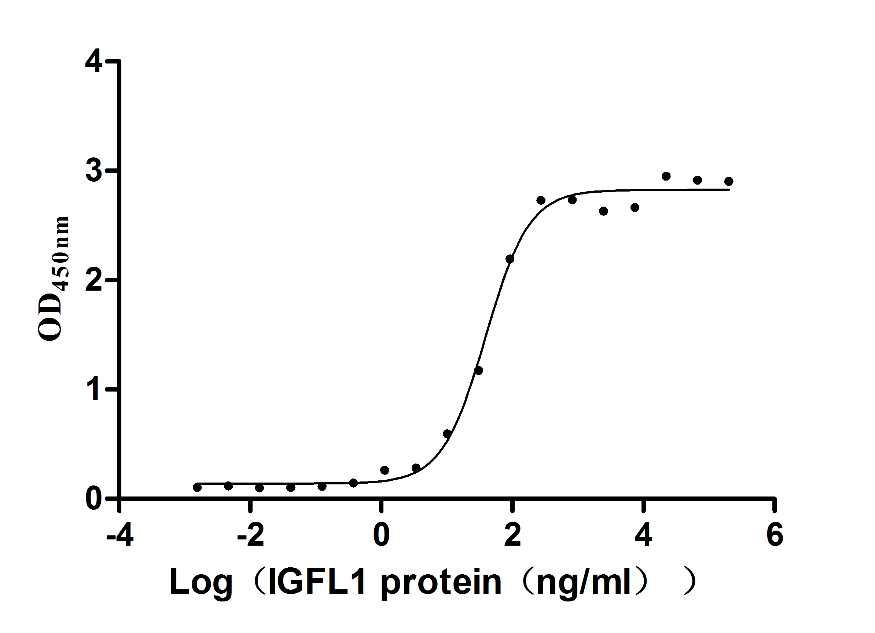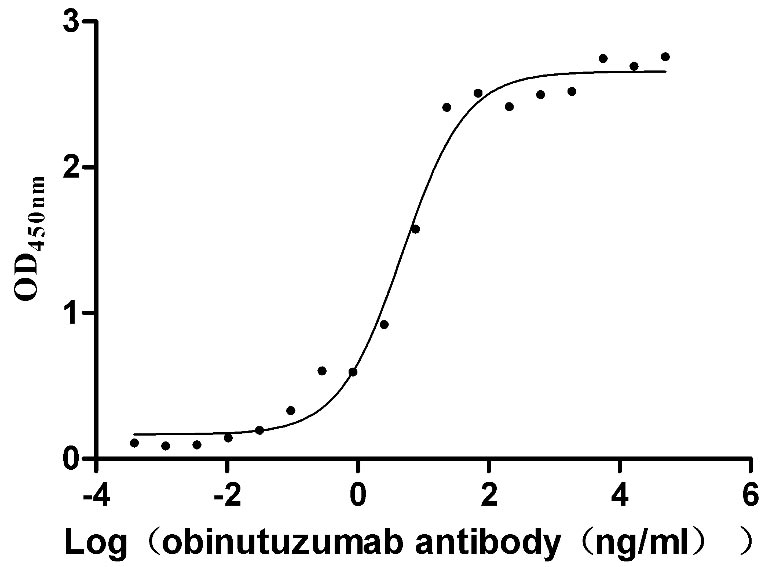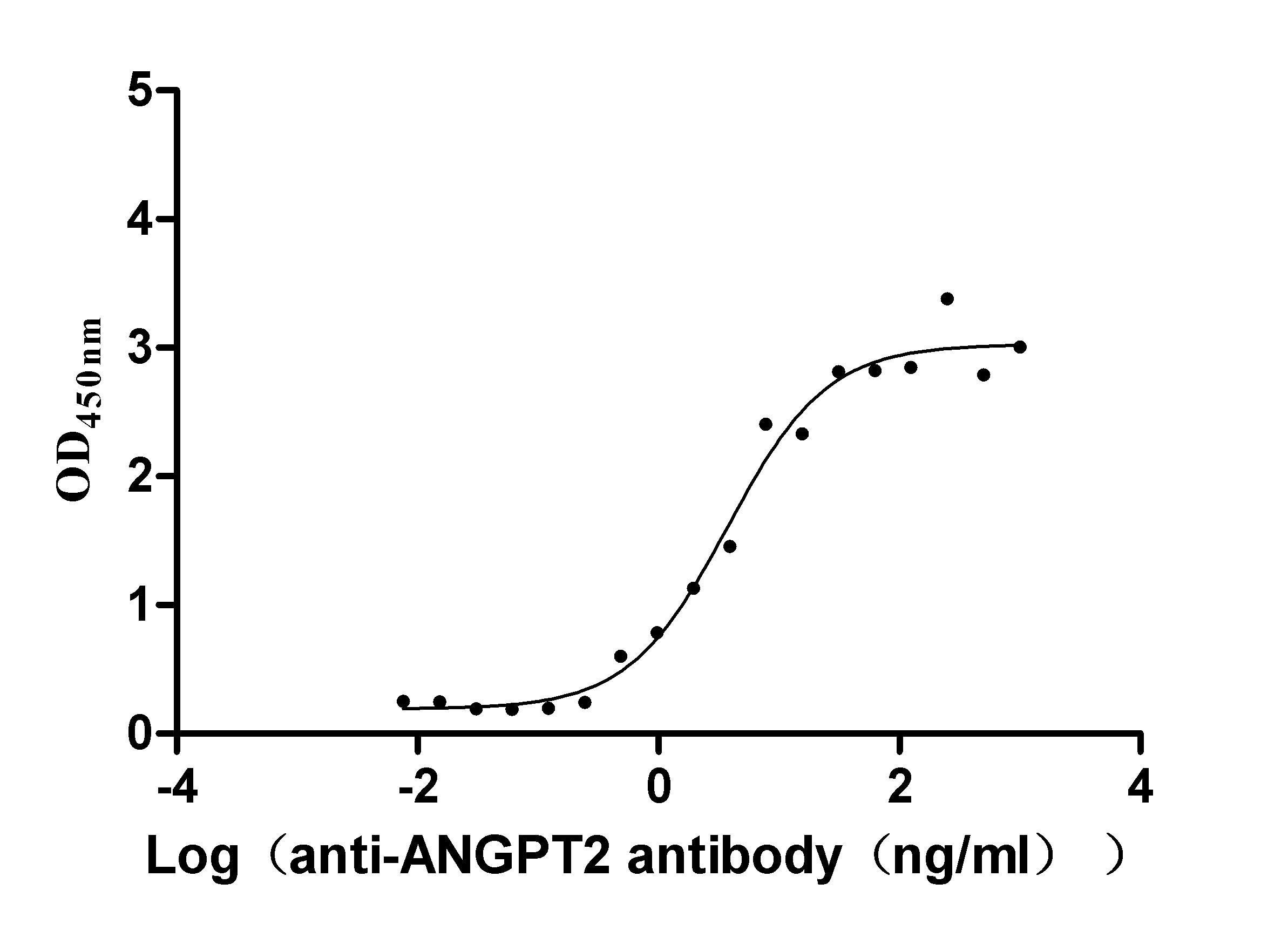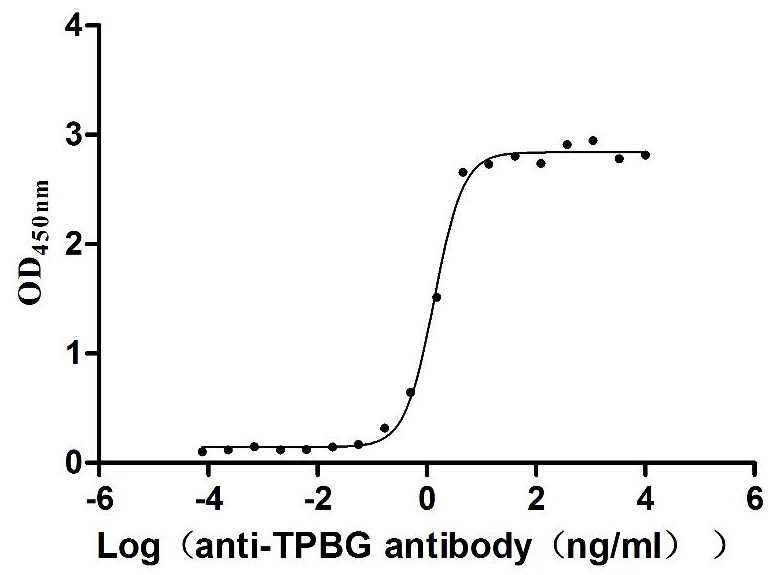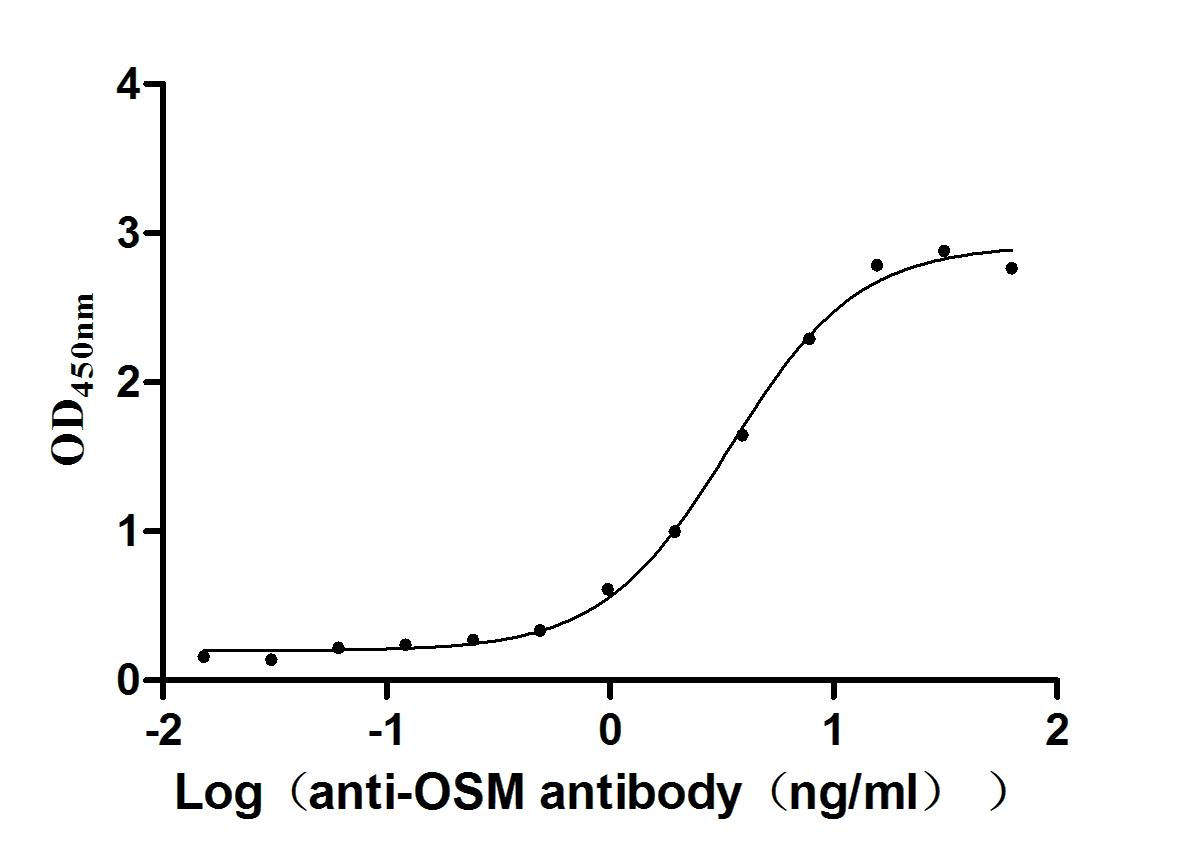Recombinant Human Coiled-coil-helix-coiled-coil-helix domain-containing protein 2, mitochondrial (CHCHD2)
-
中文名称:Recombinant Human Coiled-coil-helix-coiled-coil-helix domain-containing protein 2, mitochondrial(CHCHD2)
-
货号:CSB-YP897588HU
-
规格:
-
来源:Yeast
-
其他:
-
中文名称:Recombinant Human Coiled-coil-helix-coiled-coil-helix domain-containing protein 2, mitochondrial(CHCHD2)
-
货号:CSB-EP897588HU
-
规格:
-
来源:E.coli
-
其他:
-
中文名称:Recombinant Human Coiled-coil-helix-coiled-coil-helix domain-containing protein 2, mitochondrial(CHCHD2)
-
货号:CSB-EP897588HU-B
-
规格:
-
来源:E.coli
-
共轭:Avi-tag Biotinylated
E. coli biotin ligase (BirA) is highly specific in covalently attaching biotin to the 15 amino acid AviTag peptide. This recombinant protein was biotinylated in vivo by AviTag-BirA technology, which method is BriA catalyzes amide linkage between the biotin and the specific lysine of the AviTag.
-
其他:
-
中文名称:Recombinant Human Coiled-coil-helix-coiled-coil-helix domain-containing protein 2, mitochondrial(CHCHD2)
-
货号:CSB-BP897588HU
-
规格:
-
来源:Baculovirus
-
其他:
-
中文名称:Recombinant Human Coiled-coil-helix-coiled-coil-helix domain-containing protein 2, mitochondrial(CHCHD2)
-
货号:CSB-MP897588HU
-
规格:
-
来源:Mammalian cell
-
其他:
产品详情
-
纯度:>85% (SDS-PAGE)
-
基因名:CHCHD2
-
Uniprot No.:
-
别名:16.7kD protein; Aging Associated Gene 10 Protein; Aging-associated gene 10 protein; C7orf17; CHCH2_HUMAN; CHCHD 2; CHCHD2; Coiled Coil Helix Coiled Coil Helix Domain Containing 2; Coiled coil helix coiled coil helix domain containing protein 2; mitochondrial; Coiled-coil-helix-coiled-coil-helix domain-containing protein 2; mitochondrial; HCV NS2 trans regulated protein; HCV NS2 trans-regulated protein; NS2TP
-
种属:Homo sapiens (Human)
-
蛋白长度:full length protein
-
表达区域:1-151
-
氨基酸序列MPRGSRSRTSRMAPPASRAPQMRAAPRPAPVAQPPAAAPPSAVGSSAAAPRQPGLMAQMATTAAGVAVGSAVGHTLGHAITGGFSGGSNAEPARPDITYQEPQGTQPAQQQQPCLYEIKQFLECAQNQGDIKLCEGFNEVLKQCRLANGLA
-
蛋白标签:Tag type will be determined during the manufacturing process.
The tag type will be determined during production process. If you have specified tag type, please tell us and we will develop the specified tag preferentially. -
产品提供形式:Lyophilized powder
Note: We will preferentially ship the format that we have in stock, however, if you have any special requirement for the format, please remark your requirement when placing the order, we will prepare according to your demand. -
复溶:We recommend that this vial be briefly centrifuged prior to opening to bring the contents to the bottom. Please reconstitute protein in deionized sterile water to a concentration of 0.1-1.0 mg/mL.We recommend to add 5-50% of glycerol (final concentration) and aliquot for long-term storage at -20℃/-80℃. Our default final concentration of glycerol is 50%. Customers could use it as reference.
-
储存条件:Store at -20°C/-80°C upon receipt, aliquoting is necessary for mutiple use. Avoid repeated freeze-thaw cycles.
-
保质期:The shelf life is related to many factors, storage state, buffer ingredients, storage temperature and the stability of the protein itself.
Generally, the shelf life of liquid form is 6 months at -20°C/-80°C. The shelf life of lyophilized form is 12 months at -20°C/-80°C. -
货期:Delivery time may differ from different purchasing way or location, please kindly consult your local distributors for specific delivery time.Note: All of our proteins are default shipped with normal blue ice packs, if you request to ship with dry ice, please communicate with us in advance and extra fees will be charged.
-
注意事项:Repeated freezing and thawing is not recommended. Store working aliquots at 4°C for up to one week.
-
Datasheet :Please contact us to get it.
相关产品
靶点详情
-
功能:Transcription factor. Binds to the oxygen responsive element of COX4I2 and activates its transcription under hypoxia conditions (4% oxygen), as well as normoxia conditions (20% oxygen).
-
基因功能参考文献:
- two genetic CHCHD10 disease variants, G66V and P80L, in the mitochondria exhibit faulty interactions with MNRR1 and COX, reducing respiration and increasing reactive oxygen species (ROS), and in the nucleus abrogating transcriptional repression of ORE-containing genes. PMID: 29540477
- It does not play a major role in pathogenesis of mitochondrial myopathy. PMID: 29519717
- our study suggests that mutations in the CHCHD2 gene are not likely to be a common cause of Parkinson's disease in Chinese Han population PMID: 27118487
- The results of this study suggest that CHCHD2 exonic variants are rare among Chinese patients with Parkinson's disease. PMID: 27269965
- Its mutation is not arelevant cause of Parkinson's disease in Italian population. PMID: 28108040
- CHCHD2 gene may not play a major role in our familial Chinese Han essential-tremor and Parkinson's disease patients. PMID: 27814991
- CHCHD2 is probably not involved in the etiopathogenesis of PD in a southern Spanish population. PMID: 27839904
- CHCHD2 mutations might not be the common cause of PD in South Italy. PMID: 27839905
- We examined the association of rs10043 and Pro2Leu variants in CHCHD2 with Parkinson's disease. Our study shows a twofold increase of the Pro2Leu variant in CHCHD2 in Parkinson's disease and meta-analysis of published studies suggests that this may be a risk factor for Parkinson's disease in Asian populations PMID: 27626775
- CHCHD2 mutations may be rare in Chinese familial essential tremor patients PMID: 27717833
- A family with Charcot-Marie-Tooth disease type 1A with an exaggerated phenotype harbors a Q112H mutation in MNRR1, located in a domain that is necessary for transcriptional activation by MNRR1 PMID: 27913209
- CHCHD2 primes neuroectodermal differentiation of human embryonic stem cell and Human induced pluripotent stem cell by binding and sequestering SMAD4 to the mitochondria, resulting in suppression of the activity of the TGFbeta signaling pathway. PMID: 27810911
- The results of this study suggest that genetic variants of CHCHD2 may not be a frequent cause of MSA or ALS in our Chinese population. PMID: 27538669
- Genetic variants of CHCHD2 do not play a major role in Taiwanese patients with Parkinson disease. PMID: 26725463
- Autosomal dominant Parkinson's disease can be caused by CHCHD2 mutations and show that the Pro2Leu variant in CHCHD2 may be a risk factor for sporadic PD in Chinese populations. PMID: 26705026
- CHCHD2 mutations may not account for PD in Canadian patients. PMID: 26639156
- CHCHD2 mutations might not be a common cause of PD in Chinese familial cases. PMID: 26343503
- identified a nonsense variant in exon 3 of CHCHD2 (NM_016139, c.376C > T, p.Gln126X; figure, B) in one German patient with Parkinson disease PMID: 26764027
- CHCHD2 influences mitochondrial and nuclear functions and contributes to the cancer phenotype associated with 7p11.2 amplification in non-small cell lung carcinoma . PMID: 25784717
- The presence of any rare variants in CHCHD2 were more common in Lewy body disease patients with Parkinson's disease compared to controls. PMID: 26561290
- The results of the present study indicated that CHCHD2 may be a novel biomarker for hepatocellular carcinoma and that CREB is important in the transcriptional activation of CHCHD2 by HCV NS2. PMID: 25625293
- findings establish CHCHD2, a previously uncharacterized small mitochondrial protein with no known homology to the Bcl-2 family, as one of the negative regulators of mitochondria-mediated apoptosis. PMID: 25476776
- MNRR1 (formerly CHCHD2) is imported to the mitochondrial intermembrane space by a Mia40-mediated pathway, where it binds to cytochrome c oxidase (COX). PMID: 25315652
- CHCHD2 missense mutations are associated with autosomal dominant Parkinson's disease. PMID: 25662902
- Silencing CHCHD2 reduces cellular oxygen consumption and disrupts the assembly and activity of Cytochrome C Oxidase. PMID: 19680543
显示更多
收起更多
-
相关疾病:Parkinson disease 22 (PARK22)
-
亚细胞定位:Nucleus. Mitochondrion. Mitochondrion intermembrane space.
-
数据库链接:
Most popular with customers
-
Recombinant Human Tumor necrosis factor receptor superfamily member 18 (TNFRSF18), partial (Active)
Express system: Mammalian cell
Species: Homo sapiens (Human)
-
Recombinant Human Tumor necrosis factor ligand superfamily member 18 (TNFSF18), partial (Active)
Express system: Mammalian cell
Species: Homo sapiens (Human)
-
Recombinant Human Cytokine receptor common subunit beta (CSF2RB), partial (Active)
Express system: Mammalian cell
Species: Homo sapiens (Human)
-
Recombinant Human IGF-like family receptor 1 (IGFLR1), partial (Active)
Express system: Mammalian cell
Species: Homo sapiens (Human)
-
Recombinant Human B-lymphocyte antigen CD20 (MS4A1)-VLPs (Active)
Express system: Mammalian cell
Species: Homo sapiens (Human)
-
Recombinant Dog Angiopoietin-2 (ANGPT2) (Active)
Express system: Mammalian cell
Species: Canis lupus familiaris (Dog) (Canis familiaris)
-
Recombinant Human Trophoblast glycoprotein (TPBG), partial (Active)
Express system: Mammalian cell
Species: Homo sapiens (Human)
-
Recombinant Human Oncostatin-M (OSM), partial (Active)
Express system: Mammalian cell
Species: Homo sapiens (Human)



